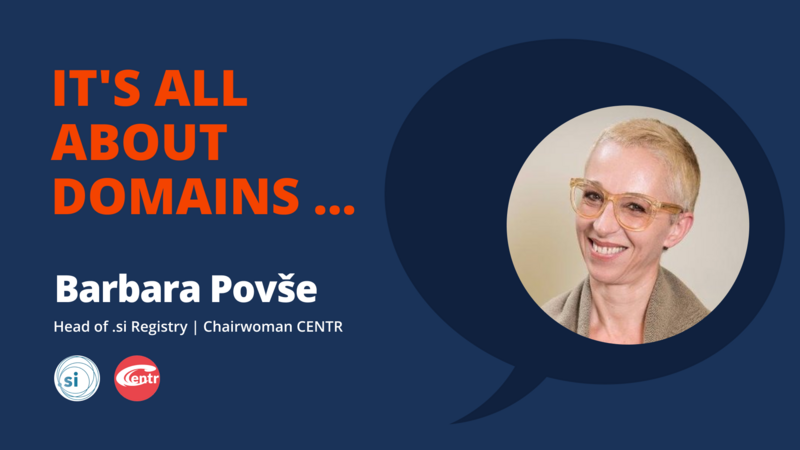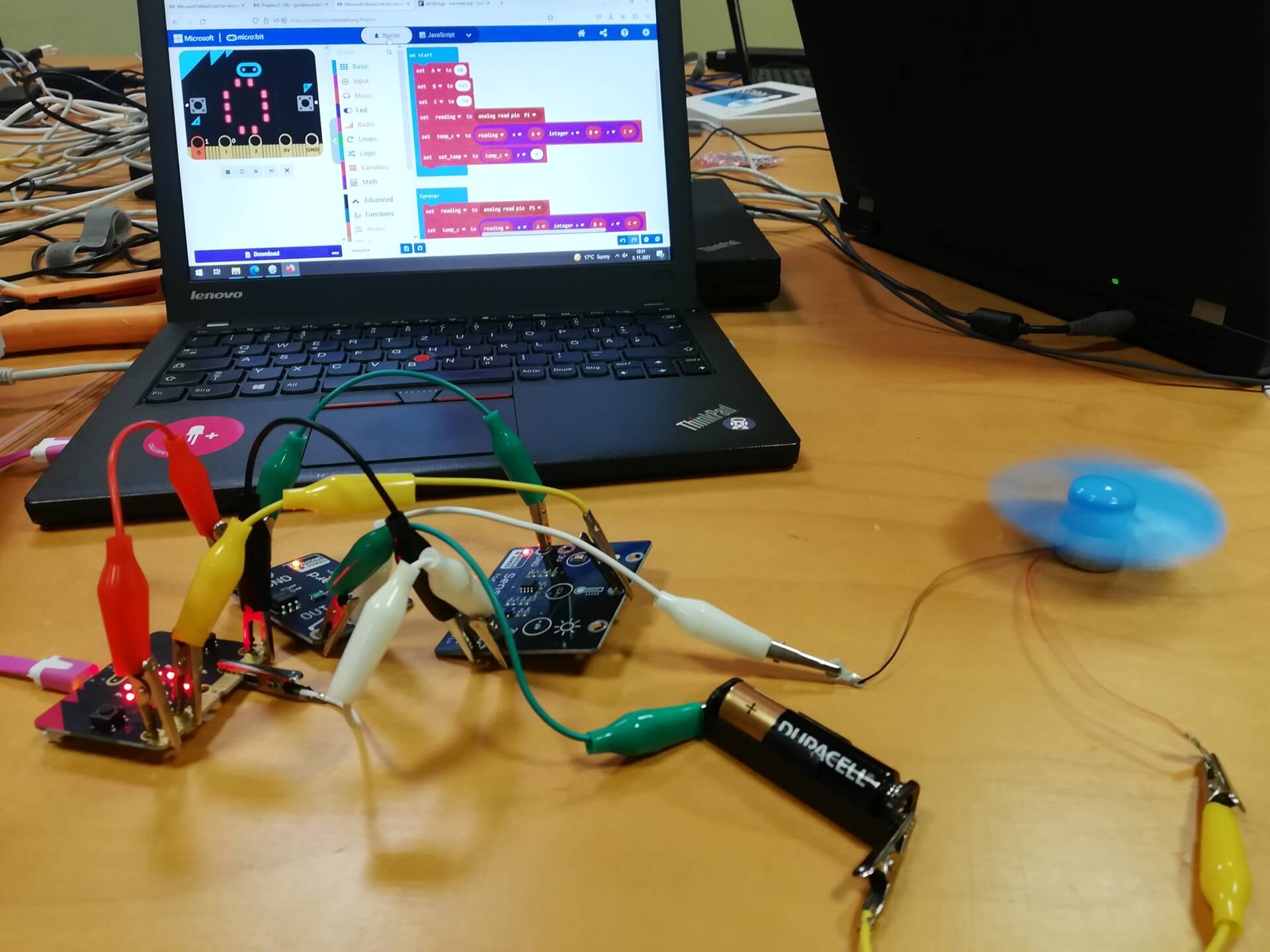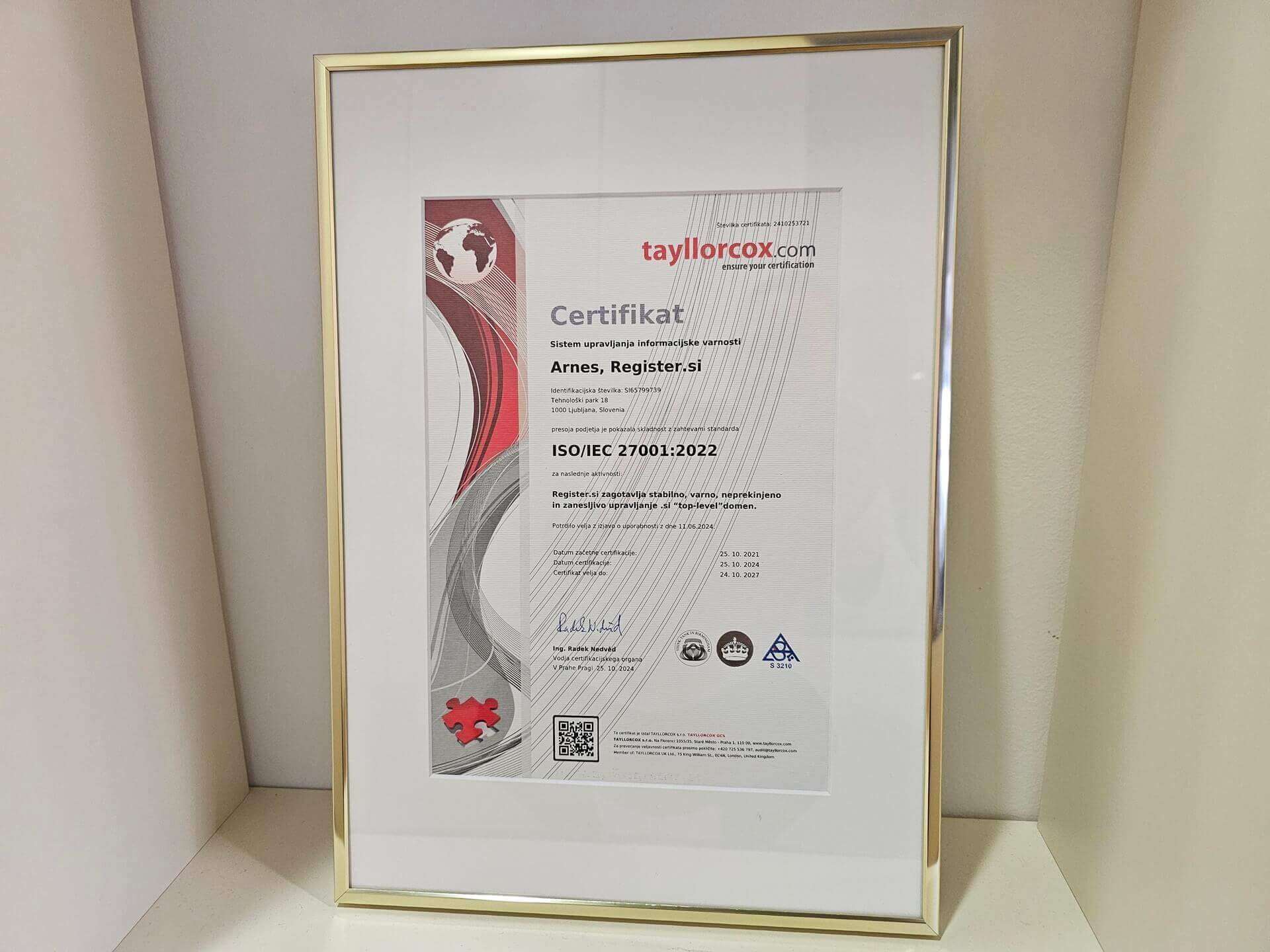InterNetX interview with Barbara Povše Golob
Head of Register.si Barbara Povše Golob was interviewed by InterNetX about the state of domain industry in Europe.
Original interview is available on InterNetX website.
“Why are ccTLDs still so popular in Europe?“
Barbara Povše Golob: During the pandemic, as our lives moved online – we worked, communicated, studied and of course shopped online – domain names have gained in importance. Many businesses, especially small ones, saw an opportunity and sometimes also the only way to survive in changing their business model and moving online.
It is true that European ccTLDs generally have a larger market share compared to gTLDs. There are many reasons for this: having a local address and identity is important for our customers, European ccTLDs pay a lot of attention to the safety and security of our operations, national legislation governs our business and protects domain name holders, local registrars offer registration in national languages, disputes are easily solved, the list goes on…
ccTLDs are our national online identity, so most customers prefer to use a local ccTLD for their online address and also as a trademark for their business, and in 2020 the domain name growth rate for European ccTLDs was significantly higher compared to some of the previous years.
European ccTLD operators will be watching their registrations carefully as the first renewal cycle approaches for domains created in 2020. Typically, there is the highest likelihood that registrants will let their domain expire after the first year. Making predictions during this unique period is challenging but we remain optimistic, especially since the demand for new domain purchases continued to increase in the first quarter of 2021. CENTR data also shows the average parking and error rates among ccTLDs to be significantly lower than equivalent rates among the top 100 gTLDs. This is significant as the usage (or its lack) of domain names strongly impacts the retention of domains.
“How are prices developing for ccTLDs? Are the national registries moving differently?”
Barbara Povše Golob: According to the CENTR statistics, the prices have largely been stable for the last couple of years.
The median buy price of European ccTLDs is 10 EUR, with the renewal price at 14 EUR. Prices vary a bit according to the ccTLD, but there are no huge differences. Some registries occasionally offer promotional prices for registrations, but often the renewal rate of discounted domain names is much lower, which means that this does not have the desired positive long-term impact on domain name growth.
“CENTR creates a quarterly Global TLD report. How do you manage to collect and sample data from so many registries?”
Barbara Povše Golob: CENTR currently counts 53 full and 9 associate members – together they are responsible for over 80% of all registered domains worldwide. CENTR members each provide statistical data for our respective registries, and CENTR also uses additional sources to gather data, which can be found at the bottom of the report: https://stats.centr.org/stats/global. The main sources for ccTLD data are CENTR members, APNIC (Asian-Pacific ccTLD organization), Net Knowledge and Zooknic, while gTLD data comes from ICANN and direct zone downloads with gTLD operators.
The CENTRstats dashboards provide an impressive amount of information on domain name growth, registrar pricing, member surveys on different topics that help CENTR members plan our operations, compare each other to other ccTLDs, and in general prepare for the future, effectively acting like a crystal ball.
“How is it possible that there is no standard governance model for ccTLD registries as one of the most visible operators of the DNS?”
Barbara Povše Golob: Given the different legal frameworks, local customs and differences in local public policies, there is not a single governance model that would fit more than a few ccTLDs. ccTLDs develop their policies following the needs of their respective local internet communities. Also, registration models differ depending on the situation in the country: some use registrars, others offer direct registration to the domain name holders.
This is also reflected in the company structure of ccTLD managers. In Latin America, registries are often academic institutions, while in Europe the most common model is a not-for-profit institution, and in the Asia-Pacific region, government-based models are preferred.
Each of the models has strengths and weaknesses, but every ccTLD registry’s mission is to provide the stable, secure, uninterrupted and reliable operation of their national TLD.
ccTLD registries – though different – are closely connected, working together in their regional organisations (e.g. CENTR in Europe, LACTLD for Latin America, …) and also cooperating on the global level within ICANN at the ccNSO (Country Code Names Supporting Organisation). We exchange information, share ideas and learn from each others’ successes and also failures.
The diversity of the DNS ecosystem is not a bug but rather a feature.
“How are European ccTLDs regulated? Are there any EU policies that all ccTLD registries have to comply with?”
Barbara Povše Golob: As I said before, ccTLDs operate under their own local legal framework. This national legislation is of course shaped by EU regulation, which is also directly applicable in EU Member States. There are currently some new EU regulatory developments which will have a strong impact on European ccTLDs’ operations and on the DNS ecosystem in general. Most notable is the proposal for a Directive on measures for a high common level of cybersecurity across the Union, repealing Directive (EU) 2016/1148 (known as the “NIS2 proposal”) and the proposal for the Digital Services Act (the “DSA”).
CENTR is the association of European country code top-level domain registries. All EU Member State and EEA country ccTLDs are members of CENTR. With all European ccTLDs on board, CENTR carefully monitors the EU regulatory developments that are important for ccTLDs. CENTR strives to be the voice of the domain name system (DNS) community at EU-level, the centre of intelligence and a reliable partner on all things related to the DNS. For more information on CENTR’s policy work, see here https://centr.org/policy/eu-policy.html. You can also sign up to their EU Policy Updates newsletter, for monthly updates on what is happening.
For those interested in the development of internet-related EU legislation I would warmly recommend reading CENTR’s comments on the NIS2 and DSA proposals.
“What have been the most noticeable changes/facts in recent years in the European ccTLD scene?
Barbara Povše Golob: One is the growing regulatory pressure on ccTLD registries, which impacts our day-to-day business enormously. The main role of ccTLD operators in the recent past was purely technical; we were responsible for operating and maintaining the technical Domain Name System (DNS) infrastructure for our top-level domain. The function of the DNS has not changed, of course. The DNS is a well-established network protocol at the heart of the internet infrastructure – commonly thought of as the “phone book of the internet”. It provides a navigation function to map user-friendly domain names to numeric IP addresses. ccTLDs only hold information enabling users to navigate the internet and do not store, transmit or enhance any content online. This has now changed and there is now an increased focus on tackling abusive and illegal content online.
Abusive and illegal content decreases trust and confidence in the internet as a platform for innovation, creativity and economic opportunity. ccTLD registries are committed to contributing to a comprehensive and effective approach against illegal online content – but we are limited in our role and function as operators of the technical DNS infrastructure.
In recent years ccTLDs have been listed as “operators of essential services”, as enshrined in Annex II of the NIS Directive concerning measures for a high common level of security of network and information systems across the Union, and are considered to be “essential entities” according to the Proposal for a NIS2 Directive.
In addition to this, according to the DSA Proposal, ccTLDs are considered to be intermediaries with a completely new set of responsibilities linked to online content, but the liability exemptions are unclear and the definition of illegal content is vague.
In this context, the changing legal framework is bringing a lot of uncertainty to ccTLDs’ operations. EU legal authorities are not approaching the problems with illegal and harmful online content in “unison” to make a musical analogy, and in both proposals mentioned above, we are facing a lot of unclarity and even contradiction. A few years ago the average ccTLD registry employee was a technical DNS “guru”. Lately, we have been increasingly employing information security specialists and lawyers.
“Has Covid 19 had an impact on the operation of .si?”
Barbara Povše Golob: Covid 19 has had an impact on the whole world, and .si is no exception. What I could say for .si is probably also true for most European ccTLDs.
We were lucky. The flourishing of online business resulted in a higher demand for domain names. But of course, we also had to face the new Covid 19 reality, that has impacted ccTLDs internally and internationally.
We have been trying to keep high morale and team spirit in our respective organisations while meeting only online. The onboarding of new staff has been very difficult. A lot of effort have been put into making sure that all of our operations functions, which became even more important, remained stable, secure and uninterrupted.
As I have already mentioned, networking with other ccTLDs is of extreme importance for us. There is no other ccTLD operator in the next building or the next town. There is only one ccTLD per country, which is why talking to other ccTLDs is essential. We used to meet each other regularly at CENTR workshops, and we met non-European registries at ICANN meetings. We are lucky to still be able to meet online, but this cannot completely replace all the individual chats, or the informal problem-solving that typically happens in the sidelines of these in-person meetings.
Looking back I believe we will come out of this much stronger. We have learned a lot while being forced to make changes to our businesses and communication, processes. It is already clear that we won’t go back to where we were before the pandemic. We have to keep what was good and incorporate it into the new “normal”. Improved tools for online participation, making sure that online participants are able to be a part of all the meetings on the same level as onsite participants, a focus on sustainability and costs, the effectiveness of online meetings, adjusting work processes to accommodate staff working from home while still making sure that team members remain connected,…
ccTLDs will face a lot of challenges and changes in the future, but that is what makes it even more interesting to be the manager of one of them and to currently be the chair of the CENTR Board of Directors.




